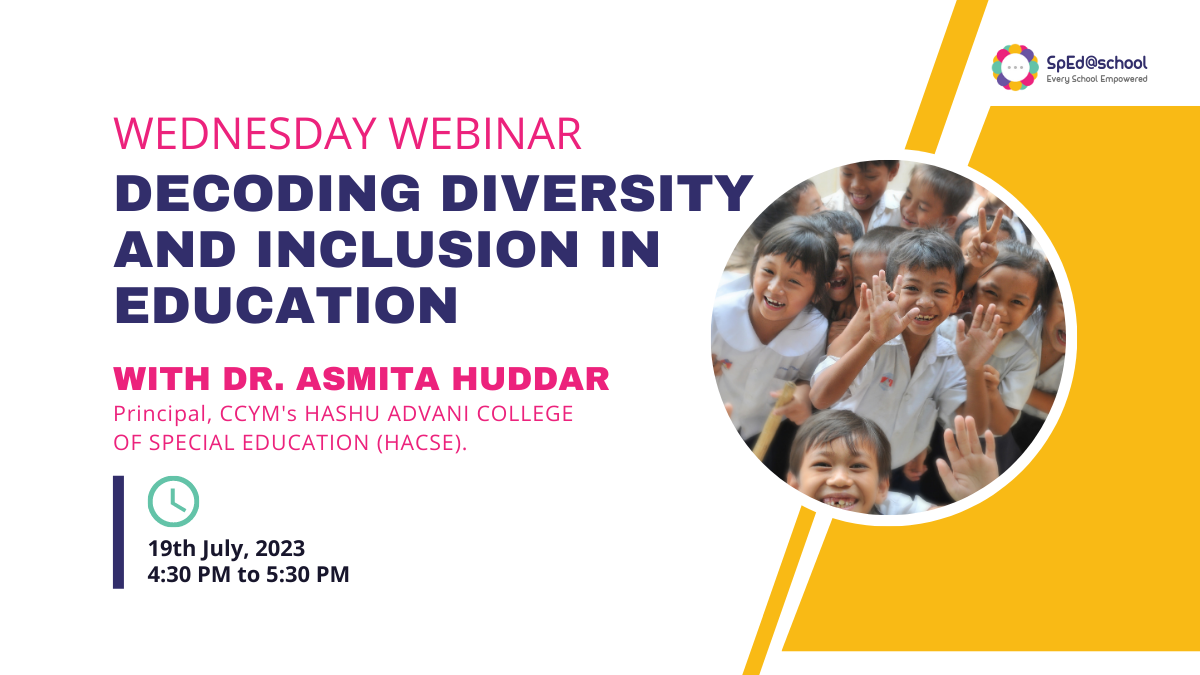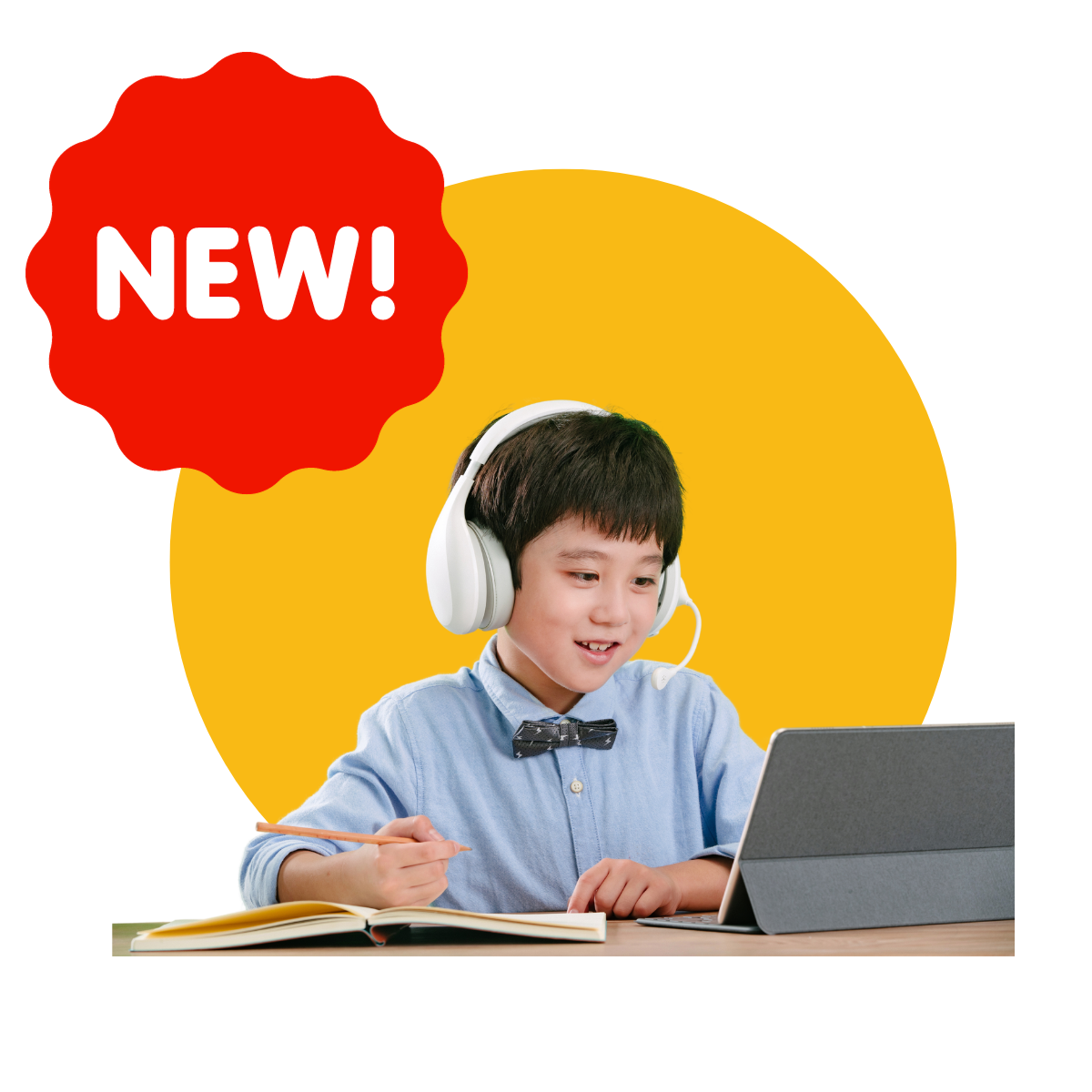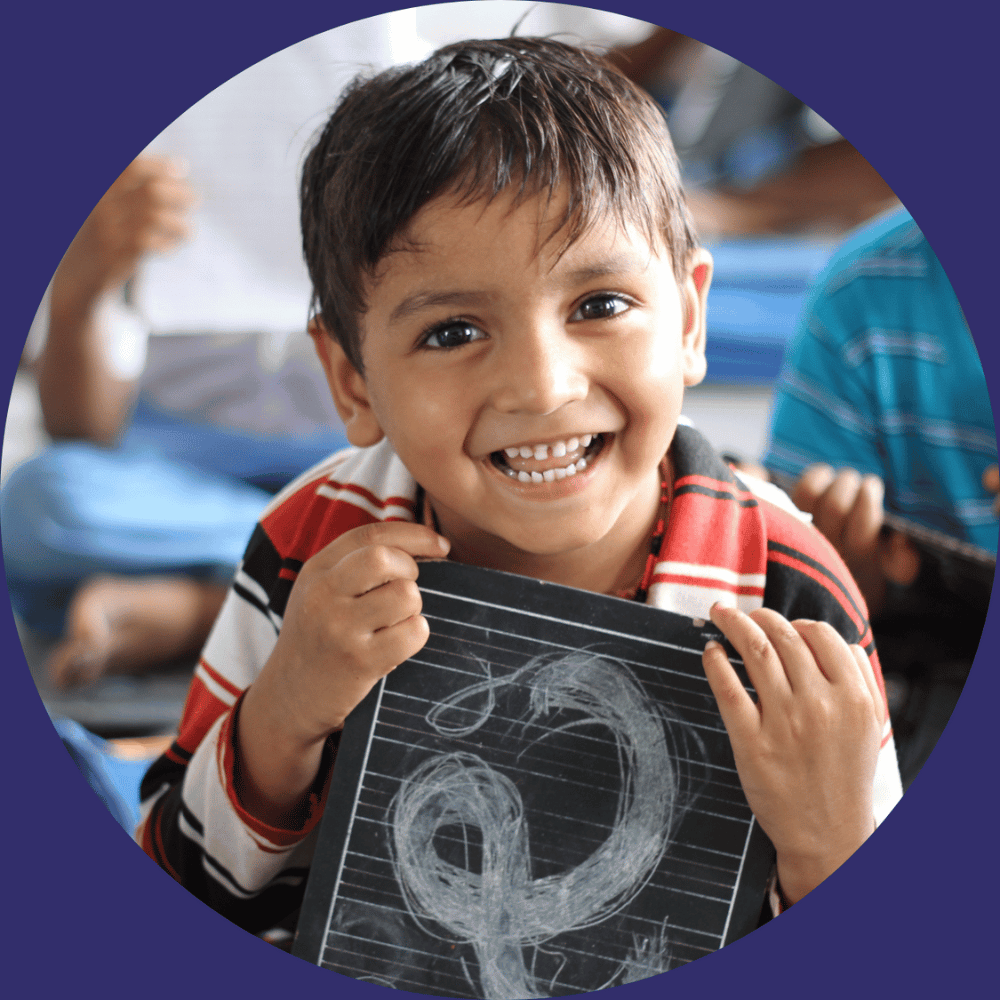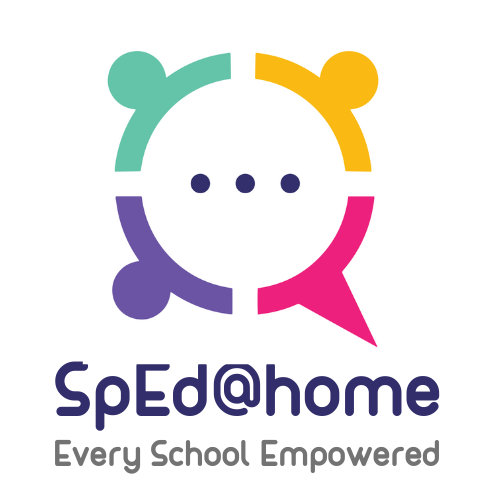UPDATE: Event Closed
In today’s society, the principles of diversity and inclusion are being increasingly recognized as essential elements in promoting a fair and equal education system. Nowhere is this more crucial than in the realm of special education, where it is imperative to create an environment that caters to the unique needs of every child. By decoding diversity and inclusion in education for special children, we can ensure that no child is left behind and that they are given every opportunity to thrive academically, socially, and emotionally.
We are delighted to invite you to our Wednesday Webinar on “Decoding Diversity and Inclusion in Education” by Dr. Asmita Huddar – Principal, CCYM’s HASHU ADVANI COLLEGE OF SPECIAL EDUCATION (HASCE). This webinar aims to shed light on the significance of diversity and inclusion within educational institutions and provide practical strategies for creating inclusive learning environments.
Topics of discussion
- The Importance of Diversity and Inclusion in Educational Settings
- Recognizing and Addressing Implicit Bias in Teaching and Learning
- Strategies for Cultivating Inclusive Classroom Environments
- Supporting Marginalized Students and Promoting Equity in Education
- Empowering Student Voices and Amplifying Underrepresented Perspectives
- Best Practices for Building Inclusive Schools
Diversity in the context of special education encompasses a wide range of factors, including but not limited to race, ethnicity, socioeconomic status, gender identity, language, and disability. Recognizing and celebrating this diversity is the first step towards creating an inclusive environment. It is essential to understand that each child is unique and possesses their own strengths, challenges, and potential. By embracing this diversity, educators can tailor their teaching strategies and provide individualized support to help each student reach their full potential.
Inclusion goes beyond mere acceptance. It involves actively engaging and involving all students in the learning process, regardless of their abilities or disabilities. Inclusive education aims to eliminate barriers and create a supportive atmosphere where all children can learn together, interact, and grow. Inclusion recognizes that diversity is not a hindrance but an opportunity for mutual understanding and growth. By including special children in mainstream classrooms, we foster empathy, reduce stigma, and promote a sense of belonging among all students.
One of the key aspects of decoding diversity and inclusion in education for special children is providing appropriate accommodations and support. This may include specialized teaching methods, assistive technologies, modified curricula, and classroom adaptations. By accommodating the unique needs of each student, educators can create a level playing field and ensure that every child has equal access to education. It is important to recognize that inclusion does not mean treating all students the same; it means providing tailored support to meet individual needs.
Effective collaboration between teachers, support staff, parents, and specialists is another crucial element in decoding diversity and inclusion in education for special children. By fostering open lines of communication and working together as a team, educators can create a comprehensive support system that addresses the multifaceted needs of special children. This collaboration ensures that interventions and strategies are consistent across different environments, reinforcing learning and promoting a seamless transition between school and home.
Furthermore, promoting diversity and inclusion in education for special children requires ongoing professional development for educators. Teachers need access to training, resources, and workshops that enhance their understanding of diverse needs and effective teaching strategies. By continuously updating their knowledge and skills, educators can better address the evolving needs of their students and create a nurturing environment where all children can thrive.
In conclusion, decoding diversity and inclusion in education for special children is a multifaceted endeavor that requires a commitment from all stakeholders involved. By embracing diversity, providing appropriate accommodations, fostering inclusion, promoting collaboration, and investing in professional development, we can create an education system that celebrates the uniqueness of every child and ensures that no child is left behind. Only through such inclusive practices can we truly unlock the full potential of special children and empower them to become active, engaged, and successful members of society.














